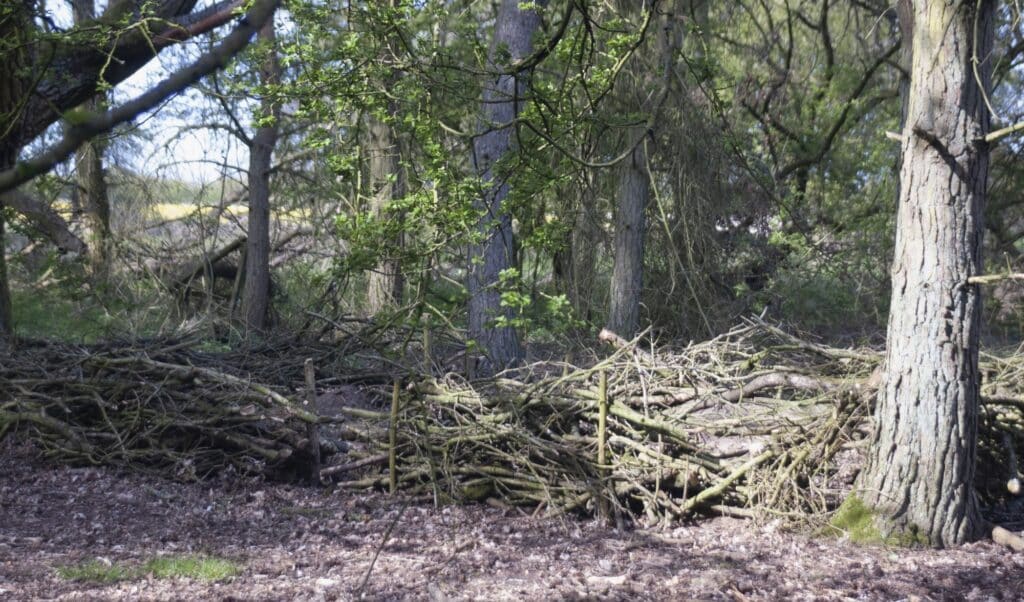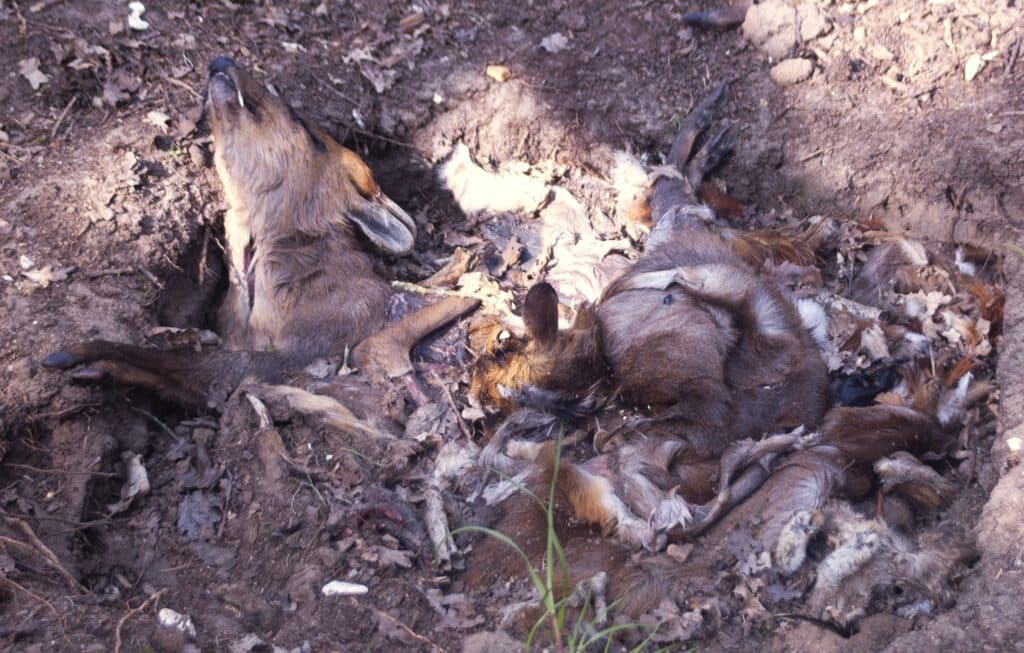Stink Pits
Anyone who comes across one of the shooting industry's 'hidden secrets' will know immediately how stink pits got their name.
Also known as middens, stink pits are built by gamekeepers on shooting estates and are pits or piles of dumped rotting mammal and bird carcasses which literally 'stink' and are used as bait to lure animals, most typically foxes, to the pit.
Stink pits can be little more than scrapes in the ground, but larger ones are often surrounded by a barrier of branches with several narrow, open entrances. A snare will be set across each of these entrances (one snare pit on a moor near Sheffield had twelve “within a small fenced area” with other snares in the vicinity).

Any foxes attracted to the smell of rotting meat will look for a way to get to it, be caught in the ring of snares surrounding the pit, shot, and thrown onto the pit with other dead foxes…
…or will be left to hang from a nearby tree as the smell will drift further on the air the higher the body is left to rot…

The shooting industry would prefer that for all its bluster about conservation and ‘animal welfare’ the public doesn’t get to see that its unique version of wildlife management includes an endless war on native predators and filling pits with the corpses of dead animals. As well as being something it doesn’t like being discussed, stink pits are usually hidden away in woodlands or plantations.
That’s hardly surprising when pits have been found with everything from foxes, rabbits and hares to crows, Wood Pigeons, pheasants and even chickens.
Scottish wildlife charity OneKind (which campaigns against snares and stink pits) was quoted in 2017 saying that they had “found all kinds of dead animals in stink pits including domestic cats, pheasants and salmon” and “protected animals … including mountain hares, badgers and pink-footed geese“.
Stink pits are (currently) legal provided that no livestock have been dumped into them (which may be in breach of legislation around safe disposal of carcasses, legislation which doesn’t seem to apply to gamekeepers and the shooting industry), but it’s worth noting that dogs may also be lured by the carcasses and walkers near shooting estates in woodlands or on moorland should know that their pets are therefore also at risk of being snared.
Specific consent is required if a stink pit is used on an SSSi, though, particularly if any structure has been put in place, if the ground has been dug, or if imported animal matter has been used.
Gamekeepers rarely bother to seek consent. If you do find one on a protected site please contact Natural England immediately, giving them as much detail as possible including GPS location and photographs.

